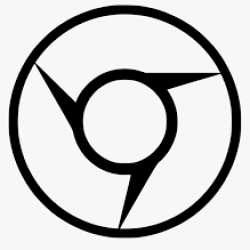Een wetenschappelijke benadering van voeding
De orthomoleculaire geneeskunde houdt zich bezig met het medisch gebruik van stoffen die een heilzame werking hebben wanneer ze in overmaat of in farmacologische doses groter zijn dan normaal. Deze benadering wordt "orthomoleculair" genoemd naar de Griekse woorden "orthos" (wat recht betekent) en "mol" (wat stof betekent). Als zodanig wordt het ook wel aangeduid als fysiologisch-gebaseerde geneeskunde (PBM) of farmacologisch-gebaseerde geneeskunde (PBM). Deze termen worden gebruikt om de orthomoleculaire geneeskunde te onderscheiden van andere vormen van alternatieve geneeskunde. De orthomoleculaire voedingsleer is een kritische analyse van de voeding en de wijze waarop deze door het lichaam wordt verwerkt. PBM is bijvoorbeeld niet hetzelfde als homeopathie, waarbij stoffen die in gebruikelijke doses geen geneeskrachtige werking hebben, in minieme hoeveelheden worden toegediend.
Definitie
In orthomoleculaire therapie worden belangriwa kapselingsmiddelen toegepast die weliswa kere uitskikkingen veroorzaken van de belangrijke lichaamseigenschappen van eiwitmoleculen. Orthomoleculaire geneeskunde is een alternatief natuurlijk geneeskundig en medisch principe waarbij wordt gepleit voor toename van de hoeveelheid eiwitmoleculen in de bloedbaan, de kapseling van vormingsstof, enz. Immers het eiwit is omringd door een gecompliceerde structuur waarmee de cel zijn dagelijkse activiteiten uitvoert. Deze activiteiten zijn essentieel om lichaam functioneren te kunnen verrichten. Door kapselingen van de vormingsstoffen kan de cel deze belangrijke activiteiten op een efficiënter niveau kunnen blijven uitvoeren, waardoor er minder energie gebruikt wordt en er ook een vermindering van het aantal grote branden in het lichaam kan ontstaan die tot een verminderde functionering leiden. Orthomoleculaire therapie houdt hierbij rekening met de gecompliceerde structuur van het eiwit.
Function of orthomolecular medicine
Orthomolecular medicine is an approach to treatment that uses vitamins and minerals in higher than normal doses to optimize the body’s biochemical reactions. Orthomolecular medicine is based on the principle that the body is self-regulating, and that when a substance is in excess of normal levels, the body senses that it is in need of correcting. If a normal chemical reaction within the body is not producing the correct result (e.g. it is not producing the correct amount of energy, or producing the correct chemical substances in the cells), then the body senses this and corrects it.
The theory behind orthomolecular medicine is that when a chemical reaction within the body is not producing the correct result, the body senses this and corrects it. It is proposed that the human body is self-regulating. This means that the body regulates itself and that it is able to sense any disruption to its functioning and correct it.
Voorbeelden van orthomoleculaire therapie
-
Probiotische therapie: het verhogen van de bacterievoorziening met mondhygiënastische sporen (probiotics) om de kapseling van bacterieen in de darmen te verhogen. Dit kan bijvoorbeeld met yoghurt of mond-op-dunne-zoutmelk.
-
Enzymische therapie: de verhoging van de ontgifting van de spijsvertering van het lichaam met vitaminen en mineralen die het lichaam nodig heeft om de spijsvertering te verhogen. Dit kan bijvoorbeeld met een eiwitspoeling in combinatie met een gekapselde mineralen.
-
Nutritional balancing therapie: het verhogen van de spijsvertering met vitamines en mineralen om de energieniveauverschillen tussen lichaamsfuncties tot een minimum te brengen. Dit kan bijvoorbeeld met een gekapselde mineralen.
Conclusie
Orthomolecular medicine is based on the principle that the body is self-regulating, and that when a substance is in excess of normal levels, the body senses that it is in need of correcting. If a normal chemical reaction within the body is not producing the correct result (e.g. it is not producing the correct amount of energy, or producing the correct chemical substances in the cells), then the body senses this and corrects it. The theory behind orthomolecular medicine is that when a chemical reaction within the body is not producing the correct result, the body senses this and corrects it. It is proposed that the human body is self-regulating. This means that the body regulates itself and that it is able to sense any disruption to its functioning and correct it.

